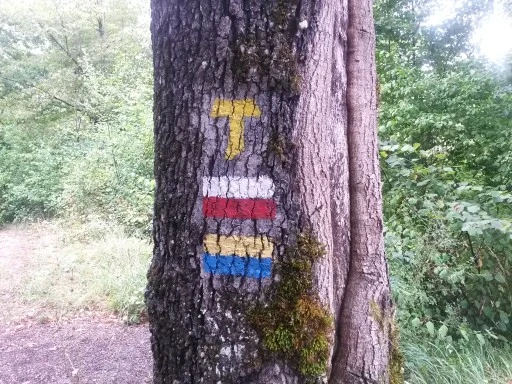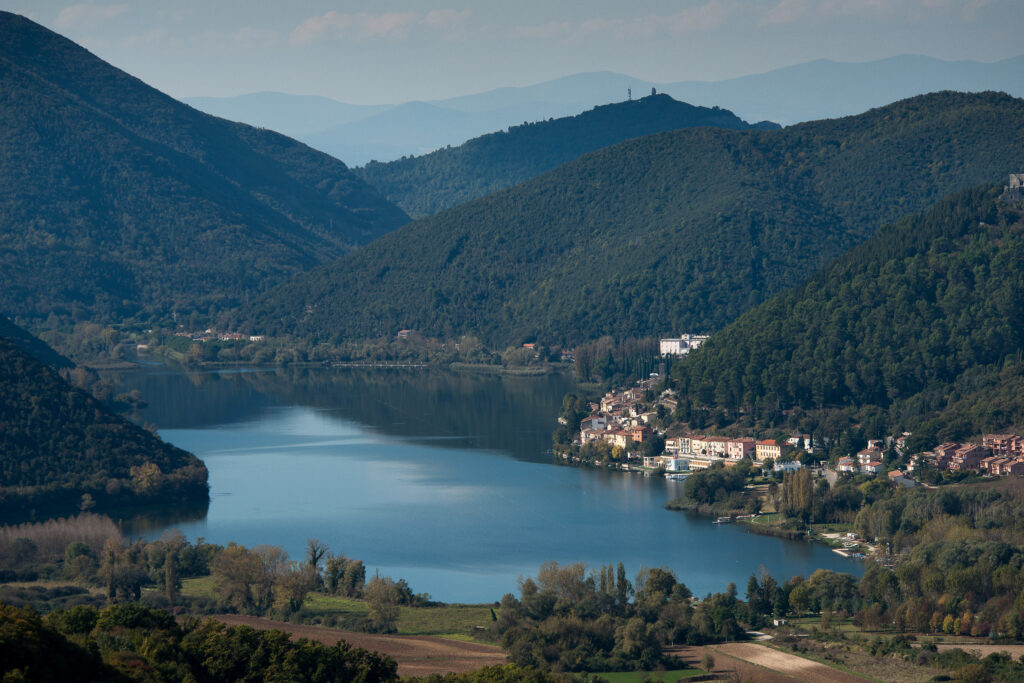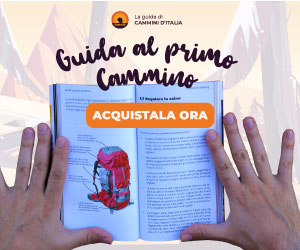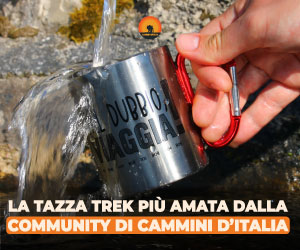

Via di Francesco
The path consists of the Via del Nord (from La Verna) and the Via del Sud (from Rome) and, as it is signposted in both directions can also be walked with Rome as the destination and taking the designation Via di Francesco towards Rome or Via di Roma.
The path consists of the Via del Nord (from La Verna) and the Via del Sud (from Rome) and, as it is signposted in both directions can also be walked with Rome as the destination and taking the designation Via di Francesco towards Rome or Via di Roma.
HISTORY
The Via di Francesco is an itinerary on foot, by bicycle and on horseback that links together a number of places that bear witness to the life and preaching of the Saint of Assisi; a pilgrimage path, which intends to reintroduce the Franciscan experience in the lands that the Poverello trod on his itineraries.
It is precisely in its adherence to the story of Francis that the Way finds its plausibility and charm: the landscapes on which the pilgrim’s eye rests are the same ones that gladdened Francis’ simple heart; the stage locations preserve the memory of his words and deeds; the people one meets along the way are related to him.
SIGNAGE
Yes – (Yellow tau and yellow/blue signals)
CAPS
NORTHWAY.
ROUTE 01: La Verna – Pieve Santo Stefano
The first leg of the Via di Francesco (Via del Nord), starts from the Sanctuary of La Verna and ends in Pieve Santo Stefano through the Casentino Park Forests
After visiting the sites of St. Francis at La Verna, the first stage of the journey into the nature sung by St. Francis begins.
Challenging gradients in the first 6 km, but the remaining part of the route is all downhill. It brings the pilgrim closer to the beauty of nature sung about by Francis.
ROUTE 02: Pieve Santo Stefano – Sansepolcro
From Pieve Santo Stefano to Sansepolcro, through the Alpe della Luna Nature Reserve, stopping at the Franciscan Hermitage of Montecasale.
Tough stage, but the natural landscapes and Franciscan Hermitages will become among the most beautiful memories of the walk.
The length of the stage can be shortened by choosing to stop at one of the intermediate stages. The challenging elevation changes make the pace slow, but perhaps they are a suitable way to get to know the “perfect gladness” of St. Francis.
ROUTE 03: Sansepolcro – Citerna
From Tuscany you enter Umbria. From Sansepolcro to Citerna, the landscape softens and the Umbrian countryside begins.
Short and uneventful stage between Tuscany and Umbria. One can take advantage of the day for a visit to Sansepolcro or Citerna, stops historically linked to the pilgrimage routes, and then reach in less than four hours the town of Citerna, from where the journey begins in the land of St. Francis: Umbria.
ROUTE 04: Citerna – Città di Castello
From Citerna to Città di Castello, among the hills of the Upper Tiber Valley.
The walk of about 20 km has a pleasant course. From the rugged Apennine landscape of the previous stages, we move on to the gentler landscape of the Upper Tiber valley. The climbs are not strenuous and you walk among fields and small villages.
ROUTE 05: Città di Castello – Pietralunga
From Città di Castello to Pietralunga, you ascend and descend in the silence of the woods with the possibility of reducing the route, choosing intermediate stops.
The stage of about 31 km can be reduced according to your needs, and taking advantage of the intermediate stops.
You always walk in nature, ascending and descending among the hills, along the way one of the places in the heart of the Via: Pieve de Saddi.
ROUTE 06: Pietralunga – Gubbio
From Pietralunga to Gubbio, where Francis was welcomed as a pilgrim at the beginning of his new life journey.
A stage of about 26 km on back roads and mule tracks. The climbs and descents are tackled quietly. The first section in the silence of the mountain valleys, while the second part is all on the plains until Gubbio. The path is dotted with hermitages, abbeys and small villages.
ROUTE 07: Gubbio – Valfabbrica
ROUTE 08: Valfabbrica – Assisi
From Valfabbrica to Assisi: the big day has arrived. The journey ends in front of the Tomb of St. Francis in the Basilica dedicated to him.
After the long days of walking, amid fatigue and joy, uphill and downhill, the journey to Assisi in the footsteps of St. Francis is coming to an end.
The stage requires a final effort to cope with the gradients.
ROUTE 08 Variant to: Valfabbrica – Perugia
From Valfabbrica to Perugia, a variation to travel to one of the most beautiful cities of art, where Francis was held prisoner.
The stop is an interesting variation to visit the city of Perugia, where St. Francis’ existential change began, during the year of his imprisonment.
The city today offers many events, museums and monuments to visit.
ROUTE 08 Variant b: Perugia – Assisi
From Perugia to Assisi, the “Perfect Letizia” stage and last part of the walk.
The last 25 km to reach first Santa Maria degli Angeli, the site of the first Franciscan community, and then climb to Assisi to end the walk at the Tomb of St. Francis inside the Basilica of St. Francis.
SOUTH WAY.
ROUTE 01: St. Peter’s (Rome) – Montesacro (Rome)
From the Eternal City we set off to Monte Sacro.
From St. Peter’s Basilica to the Basilica of St. Francis of Assisi.
The walk out of the Eternal City to Assisi follows a route through parks and bike paths along the Tiber and Aniene rivers.
ROUTE 02: St. Peter’s (Rome) – Montesacro (Rome)
From Monte Sacro to Monterotondo. Departure to the hills surrounding Rome. Stage without major elevation gain.
Less than 20 km to head toward the Latium Sabina. In the first part the walk leaves behind the noise and traffic of the big city. It continues through meadows and views of the city from the Marcigliana Reserve.
ROUTE 03: Monterotondo – Ponticelli di Scandriglia
From Monterotondo to Ponticelli di Scandriglia.
From the city you enter the Lazio countryside of Alta Sabina.
Long stage of about 30 km, with ascents and descents along Sabina hills and through fields.
Asphalt sections alternate with dirt road sections. Possibility of reducing the length with intermediate stages.
TAPP 03 variant A:detour to Farfa
From Acquaviva di Nerola to Ponticelli di Scandriglia via Farfa Abbey.
The long variant allows discovery and a stop at the beautiful Benedictine Abbey of Farfa.
ROUTE 04: Ponticelli di Scandriglia – Poggio San Lorenzo
From Ponticelli di Scandriglia to Poggio San Lorenzo, we walk through villages, fields and olive groves.
Challenging stage in terms of length and elevation gain, offering beautiful rural landscapes of fields and orchards. Along the way views of the surrounding mountains.
ROUTE 05: Poggio San Lorenzo – Rieti.
From Poggio San Lorenzo to Rieti, on the way to the Holy Valley of St. Francis.
ROUTE 06: Rieti – Poggio Bustone
From Rieti to the Sanctuary of Poggio Bustone, with a stop at the Sanctuary of La Foresta.
In this stage of about 18 km, we touch on the Sanctuaries of La Foresta and Poggio Bustone, among the places dearest to the memory of St. Francis.
We often walk through the green, between ascents and descents, touching on villages and small churches.
We need to conserve some energy for the ascent to the Sanctuary of Poggio Bustone.
ROUTE 06A Variant for Terni – Rieti to Greccio.
From Rieti to the Sanctuary of Greccio, through the Sacred Valley and past the Sanctuary of Fonte Colombo.
From Rieti we walk to the Sanctuary of Greccio, where the Nativity tradition began at the hands of St. Francis.
The approximately 24-kilometer stage alternates between trails and secondary roads, and has as its only roughness the climb to Colle Sant’Elia. Between abbeys and villages we walk with unique views of the Sacred Valley and Mount Terminillo.
Stage 06B – Variant for Terni – from Greccio to Terni
From Greccio to Terni: an easy route variant for everyone. From Greccio, the place where St. Francis first made the Nativity scene, one sets out to reach his homeland: Umbria. You walk through woods and meadows.
Stage 06C – Variant for Terni – from Terni to Arrone
Terni to Arrone. It is a false-flat walk with a challenging climb. It starts from Terni to enter the Nera River Valley and reach Marmore Falls and the village of Arrone.
ROUTE 07: Poggio Bustone – Piediluco
From the Sanctuary of Poggio Bustone to Piediluco, to put down your backpack along the shores of the placid lake in Umbria.
It starts from the Sanctuary of Poggio Bustone to reach the shores of Lake Piediluco in 22 km.
The stage is challenging because of the steep climb to the Beech of St. Francis of Assisi, the beauty of the grandiose tree and the landscapes over the valley reward the effort.
ROUTE 08: Piediluco – Arrone
From Piediluco to Arrone on a walk along the waters of the Velino and Nera rivers, with a possible detour to the Marmore Falls.
You walk pleasantly for 13 km along the course of the Velino River and then enter the Valnerina, the long, narrow valley of the Nera River.
You go up the valley floor, and you can take the opportunity to make a detour to discover the Marmore Falls.
ROUTE 09: Arrone- Ceselli
You walk flat along the Valley of the River Nera, whose loops have been likened in local legends to the coils of a dragon.
Along ancient thoroughfares, guarded by sloping castles, you walk surrounded by green nature.
ROUTE 10: Ceselli – Spoleto
From Ceselli to Spoleto, uphill passing by the Hermitage of Monteluco and walking through the Sacred Wood.
A challenging 17-kilometer stage among the most beautiful of the St. Francis Way.
From the narrow, green Nera River Valley, we move on to the sunny Spoleto Valley to reach Spoleto, a city of art with its magnificent cathedral, where Francis of Assisi’s autograph letter is preserved.
ROUTE 11: Spoleto – Poreta
From Spoleto to Poreta, we walk among the olive trees of the Umbrian hills that inspired St. Francis’ love of nature.
Easy stage of about 15 km.
On the road in the Spoleto countryside, dominated by the expanses of olive trees that cover the hills entirely.
A few uphill climbs, but the effort is repaid by the beauty of the landscape.
ROUTE 12: Poreta – Trevi
From Poreta to Trevi, among ancient olive hermitages to reach one of Italy’s most beautiful villages.
The Way of St. Francis continues over the hills overlooking the Spoletana Valley through olive groves protected by dry stone walls.
The stage is 12 km, but the presence of numerous climbs and descents can slow the pace.
ROUTE 13: Trevi – Foligno
From Trevi to Foligno, from the hills of olive trees you reach the valley.
You walk along the olive terraces, and step by step you descend into the valley.
The route of about 13 km is characterized by the presence of numerous votive shrines at the crossroads, which seem to guide the pilgrim toward Assisi.
ROUTE 14: Foligno – Assisi
From Foligno to Assisi: the big day of arrival at the destination.
The destination of the journey is the Basilica of St. Francis, here in front of the tomb of the Poverello the long journey ends.
Stage 14A – From Foligno to Assisi (hiking)
From Foligno to Assisi, following the paths of Mount Subasio.
The destination is now very close, and this challenging stage seems to encapsulate all the characteristics of the Via so far traveled: tough climbs, nature and beautiful landscapes.
The walk ends at the Basilica of St. Francis in Assisi.
WATER SOURCES.
STAGE 01: Water sources are present only at the beginning and 1 km from the end of the stage. Remember to fill your water bottle with at least 1.5 liters of water in summer.
ROAD BOTTOM.
35% asphalt
65% dirt road
CREDENTIALS
The Pilgrim’s Credential must be requested at least 3 weeks before departure (2 months for shipments outside of Italy) to allow it to be sent by postal service.
The sending service is free of charge and is carried out by the Credential Office at the Small Reception of the Diocese of Gubbio.
The Credential of Via di Francesco is approved by the Umbrian Episcopal Conference, the General Custody of the Sacred Convent O.F.M. Conv. of Assisi, the Seraphic Province O.F.M. Capuchins of Umbria, the Seraphic Province O.F.M. Conv. of Umbria and the Province of St. Francis of Assisi of the T.O.R. .
IN TENT
Where can one set up camp?
it is always possible to camp with prior application and authorization from the municipality and/or the accommodation facility with tent space. It is not possible to camp in areas falling within national parks
Is permission needed?
By the municipality or c/o accommodations equipped with tent spaces
CONTACTS
info@viadifrancesco.it info@viadifrancesco.it
piccolaccoglienzagubbio@gmail.com – tel. +39 3661118386
veraviadifrancesco@gmail.com

GUIDE TO VIA DI FRANCESCO – from La Verna and Rome to Assisi
A unique guidebook that encompasses two routes to Assisi: one starting from La Verna in the north and the other from Rome in the south.
The Way of Francis is a 450-km walking route in the green heart of Italy, crossing Tuscany, Umbria and Lazio. The route winds through the Casentino Forests National Park, the Alpe della Luna nature reserve, the Upper Tiber Valley and the Santa Reatina Valley, with alternative options for Perugia and Terni.
The guidebook offers information updated to January 2024 and includes everything you need for the journey: detailed maps, elevation elevations, elevation changes, suggestions on where to stay overnight, accurate route descriptions, places to visit, and a selection of texts from Franciscan sources.






